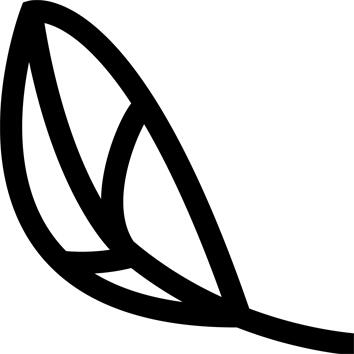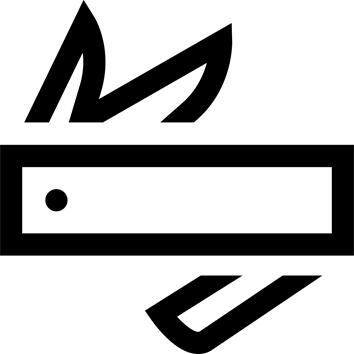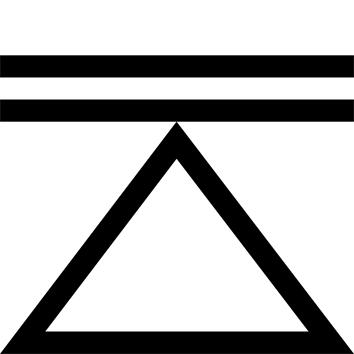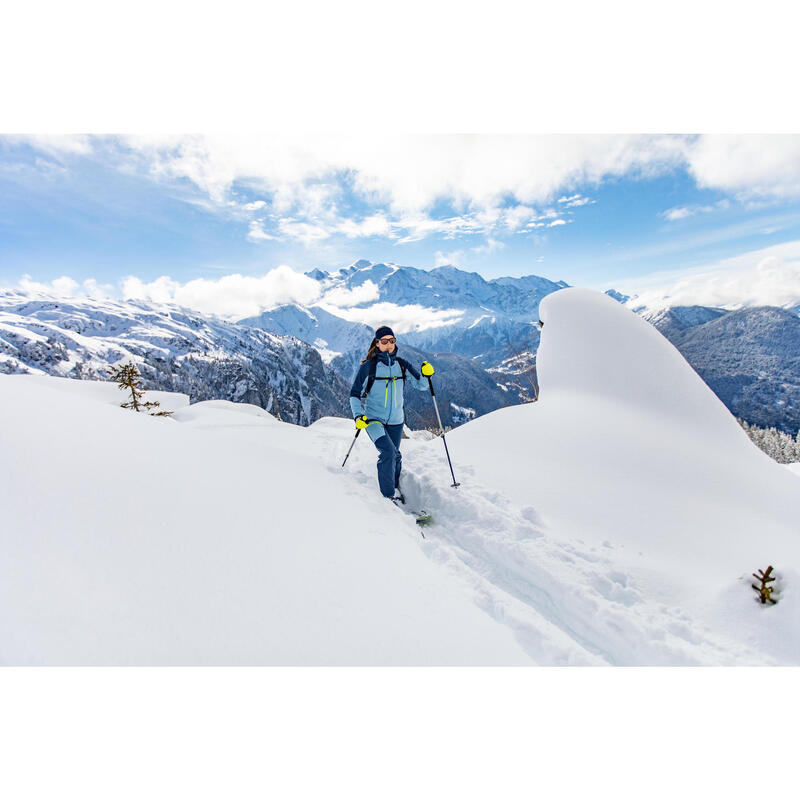Product improvement: addition of skin netting
As of September 2021, and in response to your feedback on our website, we have decided to add a skin net to our touring skis.
To maintain good glue adhesion, we recommend storing the skins on the net.
What is Mountain Touring
Mountain Touring is our definition of ski touring in the mountains.
Make your own tracks, create your own ascent itinerary far from the ski resorts.
Descend where the snow seems best and the slope least exposed to avalanche risk.
Authentic ski touring.
You evolve in a wild mountain environment, you must master your movements, prepare your outings and know your avalanche safety equipment.
Don't go out alone.
Weight for one ski
Bare ski:
168 cm = 1300g
176 cm = 1400g
Skins
The skins offered with the MT85 skis are cut to the size and width of the ski.
They are made from 70% Mohair and 30% synthetics, the best compromise between glide (on ascents to limit effort) and grip (on ascents to limit the recoil effect).
The skins are fitted with an elastic band at the front for quick attachment to the tip, and an adjustable camlock at the rear to lock the skin to the heel of the ski.
Bare Skis
We have chosen to offer you this variant, without bindings, to let you choose the reference.
If you would like a binding with a ski stop, for greater safety, we offer the TOUR FREE, available on our website.
Construction
Sandwich construction with straight skate edges,
Lightweight Paulownia wood core with fiberglass reinforcement.
What is a rocker
On a ski with rocker, the tip and sometimes the tail lift off the ground much earlier than on a cambered ski without rocker. This shifts the contact points toward the center of the ski. This shortens the ski's surface area in contact with the snow, giving you more maneuverability and lift in soft snow. The angle of the rocker gives you more edge length for greater grip on hard snow. The longer the rocker, the more maneuverable your ski.
Rocker
The MT85 has a pronounced rocker at the front of the tip and a slight rocker at the back of the ski, making it easy to maneuver and pivot on all types of snow.
What is a camber?
When a ski is placed on the ground, the contact points of the ski on the snow are located near the tip and tail, while the center of the ski (under the bindings) rises slightly (this is the camber). The longer and higher the camber, the more grippy and responsive the ski. The lower the camber, the more forgiving and maneuverable the ski.
Cambre
The MT85 has a high camber that provides reassuring grip on hard snow and bounce in powder.
What is the rib line on a ski?
The sidecut is characterized by 3 dimensions: width at the tip (front of the ski), width at the runner (middle of the ski) and width at the tail (back of the ski). The wider the tip, the easier the ski enters the turn. The narrower the runner, the grippier the ski on hard snow. The wider the runner, the more comfortable and stable the ski is in snow changes. The wider the tail, the more the ski stays in the curve. The thinner the heel, the easier it skids.
Dimension lines
Dimension lines =
168 cm = 122/85/108 Radius: = 17m
176 cm = 122/85/108 Radius: = 19m
Preparation
Skis waxed and sharpened, ready to use. Edges sharpened to 89
How to choose the right ski size?
The shorter the skis, the more maneuverable they are.
This is why beginners should choose shorter skis.
In general, for ski touring, we recommend choosing skis:
from -5cm to -10cm below your height.
The length can also vary according to the terrain:
In resorts, on marked itineraries: from -5cm to -15cm below the skier's height,
In the mountains from 0 to -10cm below the skier's height.









